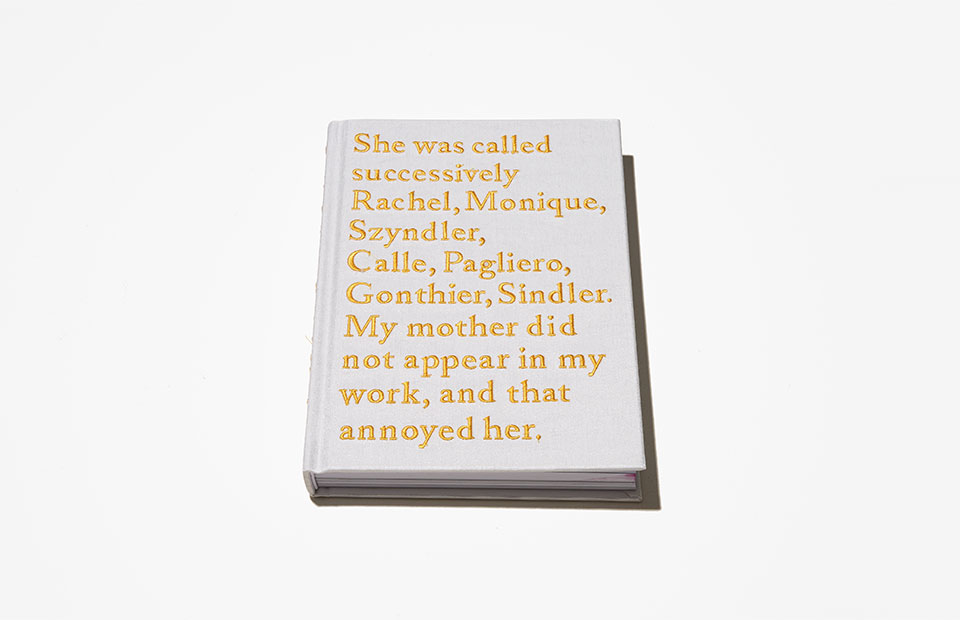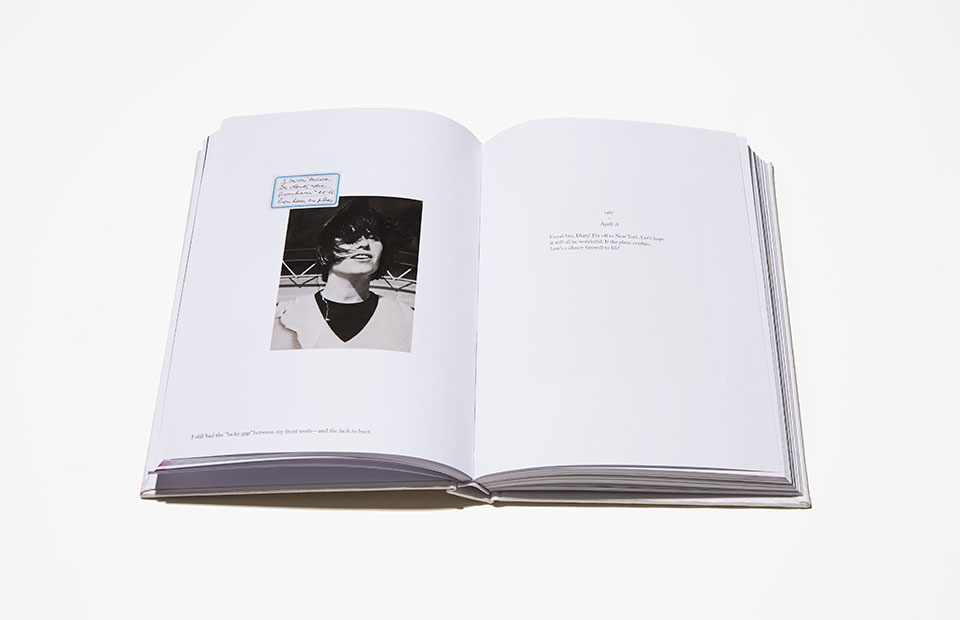
Artist Sophie Calle once shared an email — a break-up missive from a boyfriend — with 107 women, asking for their interpretation and response. In another work, she went undercover as a maid and documented guests’ belongings. And in yet another, she surreptitiously followed — and photographed — a man through the streets of Venice. The New York Times described Calle “as the most celebrated conceptual artist in France, and the most French of artists.”
Calle’s newest book, Rachel Monique, out this spring by D.A.P., continues along the same vein. Like the rest of her oeuvre, it’s deeply intimate and swirls around notions of identity and absence, quickly turning you, the viewer, into a voyeur. And if you couldn’t guess from its placement here in our 2017 Mother’s Day Issue, that acutely personal relationship she’s mining? It’s with her mother, Monique Sindler, who changed her name from Rachel during WWII.
“Book” may not even be the right descriptor here. Although its contents are largely gathered from a 2007 Venice Biennale installation of the same name — which, next month, will be on view as part of a larger show at San Francisco’s Fort Mason Center for Arts & Culture — the tome itself is very much its own objet d’art, with the first lines embroidered in gold on the cover, vintage photographs reproduced with spot varnish and the text beautifully embossed, white on white. Rachel Monique is a celebration of Calle’s mother, insecurities and all — and tells her story through diary entries and family photographs — but also comes tinged with a sense of loss. “A few days before she lost consciousness, my mother asked me to take a box full of her photo albums and personal diaries home with me,” writes Calle. “She had chosen not to destroy them. She wasn’t naïve about what might happen to them if she left them in my hands.”
So there she is, a smiling teenaged Sindler with pearl strands around her neck. And there, drinking champagne with American soldiers. Skiing in Val-d’Isère. Parachute jumping in Acapulco. She writes about wrinkles (“unforgiving”), a cancer scare (“this year is not starting off well”), voting (“let’s not forget the elections!”), being “bored to death” (“no, I am not depressed”), and “bicycle bicycle whiskey whiskey reading poems chit chat, in other words life!”
The narrative of Rachel Monique continues even after Sindler’s death in 2006. In one section, Calle records her trip to the Arctic to bury mom’s portrait and jewels; her mother had always wanted to visit. “Will climate change carry her out to sea as far as the Pole?” she writes. “Will she be dragged down the valley towards the ice cap? Maybe in thousands of years, glaciologists will find her ring and endlessly discuss this flash of diamond in Inuit culture.”

